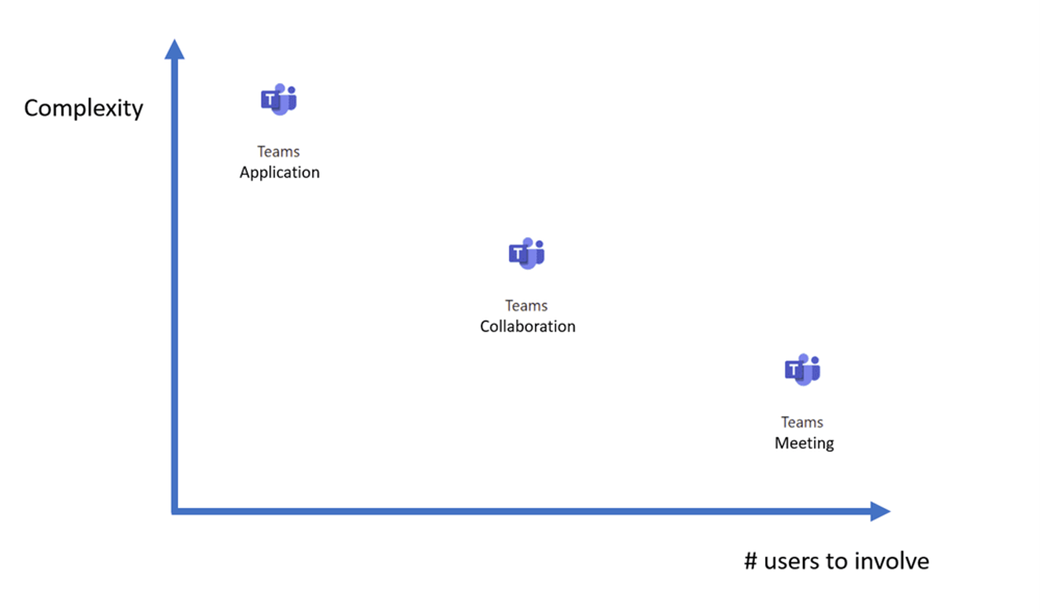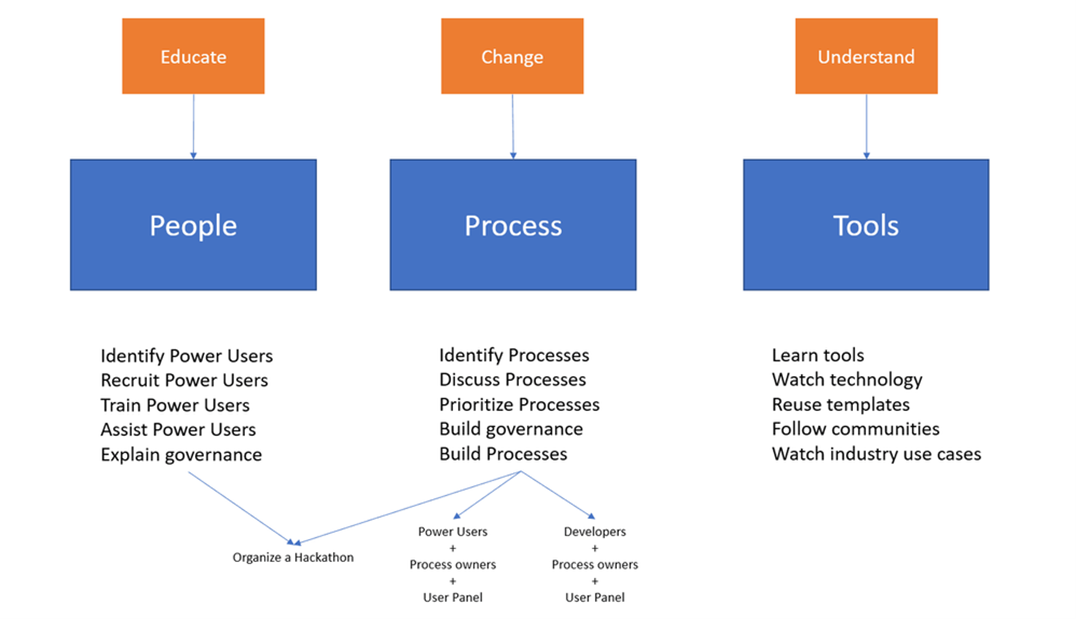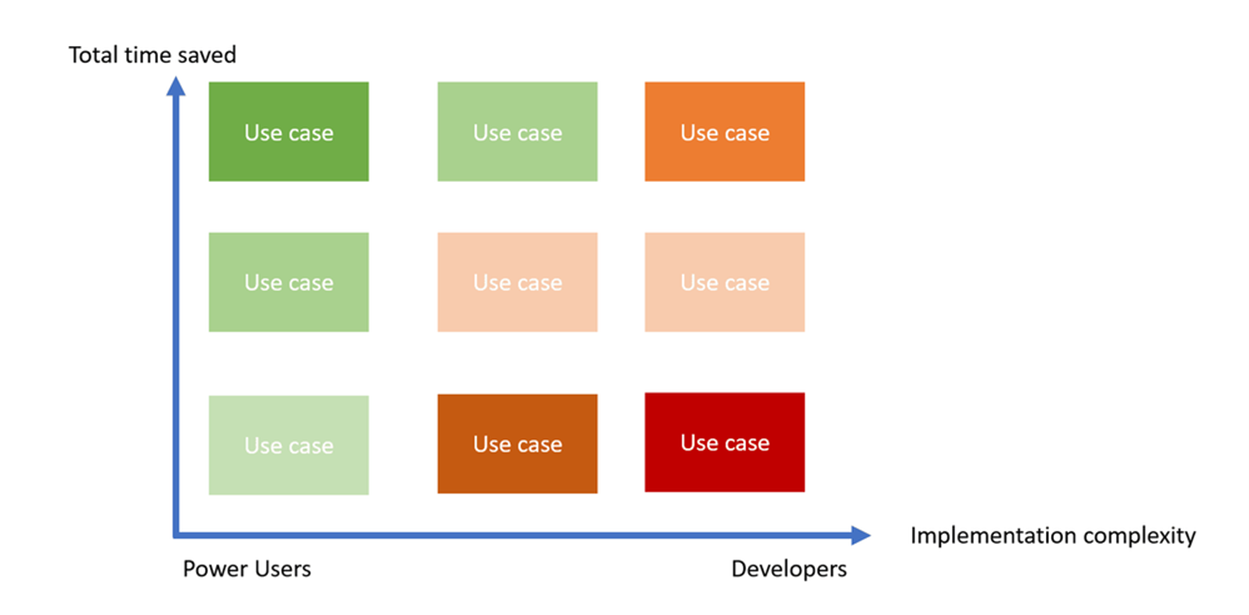

2023/05/13 Microsoft Cloud Solutions 514 visit(s) 3 min to read
Ctelecoms

Microsoft Teams is widely regarded as a successful digital transformation for remote meetings due to its simplicity, which has led to impressive adoption and usage rates, including 2.7 billion meeting minutes each day and 300 million monthly users. However, some of us may have adopted Teams because it was easy, because it was quick, or perhaps it’s just what we were given. To address this, it is important to examine behaviors and seek guidance to create a comfortable and efficient work style that maximizes the benefits of Microsoft Teams.

In addition to being a chat and online meeting tool, Microsoft Teams also offers collaborative document editing capabilities and the ability to integrate additional information to enhance the context of your materials.
A great example of using Microsoft Teams is for project management. Beyond just storing project-related documents, Teams allows you to segment them into workstreams (channels) and collaborate on them using co-authoring capabilities. You can also add other useful information related to the workstream, such as task lists (Planner or Lists tab), notes (OneNote tab), a project roster (Excel tab), or a list of recorded meetings (Stream tab). Additionally, conversations (posts) can be held in channels to ask questions, inform team members, or conduct polls (Forms). All of this information is easily accessible in one place and visible to all team members, eliminating the need for long email chains.
Microsoft Teams is a powerful tool for collaboration, and its self-service nature allows for spontaneous expansion as anyone can create a team. However, with so much contribution, it is crucial to consider how to maintain organization. Achieving success with Teams for collaboration requires time, effort, discipline, governance, and alignment. The culture of the organization can be a significant obstacle to the adoption of Teams for collaboration, and it is important to address any cultural barriers to ensure success.
Shifting from a culture of individualistic communication using Outlook to a collaborative culture using Teams requires a significant cultural change that can be challenging to implement throughout an organization. To successfully adapt to this cultural shift, effective communication is necessary. The communication is not intrusive, so we need to understand how to follow what’s important for us and accept that perhaps we will need to reconnect and clarify later. The communication is the same for every member of a Team, so we need to understand and agree on the best practices to communicate efficiently. A few examples might include @mentioning people or liking a message to acknowledge we read.
For more information on how to collaborate better and accomplish more with Microsoft Teams, be sure to check out our blog titled "Collaborate Better & Accomplish More with Microsoft Teams!"
https://www.ctelecoms.com.sa/en/Blog216
Despite the benefits of using Microsoft Teams for collaboration, one of the biggest challenges is adjusting to the team structure. When using Outlook or OneDrive, individuals have more control over how they organize and manage information in a self-centric manner. However, with Teams, it's important to comply with organizational guidelines, collaboration requires compromise, and finding a balance between individual preferences and organizational guidelines is crucial for successful adoption and usage of Teams.
Implementing Microsoft Teams for collaboration requires a significant investment of time and effort, as well as alignment, experimentation, and adjustment to achieve success. Additionally, strong leadership is necessary to effectively manage and guide the use of Teams. It's important to remember that Teams is not solely focused on online meetings, chat, and collaboration, but rather provides a powerful environment that can layer business processes in the context of our work beyond the foundation of collaboration.
As a physician in a hospital, accessing patient information and communicating with specialists can be challenging. However, using Microsoft Teams, physicians can securely access patient information through a bot on their phone and ask follow-up questions through conversations with specialists. This allows for more efficient communication and immediate context. Microsoft Teams, along with Power Automate and Power Apps, can be used as a citizen development platform for building business process-driven apps quickly, with a low-code or no-code approach. To get started building a citizen developer environment, it is important to prioritize development needs and identify power users to lead the development process.

It can be challenging to identify the most critical business processes that need to be changed. Spending time with business users to understand their work and processes is crucial in determining the right processes to focus on. To evaluate priorities, using the "time saver" criteria can be helpful, focusing on processes that can save the most time for people. However, it's important to also consider feasibility and other criteria such as quality, satisfaction, and strategic importance to determine the best processes to prioritize. Using the time saver criteria as a starting point can help identify processes that will provide the greatest benefit.

Once again, when it comes to collaboration or changing a business process, there is a huge need to gather power users and partner with IT to develop the best approach.
If you are interested in learning more about Microsoft Teams and how it can benefit your organization, we would recommend reaching out to Ctelecoms experts. We can provide valuable insights and guidance on how to effectively implement and utilize Teams to improve collaboration and productivity.
Related blogs:
https://www.ctelecoms.com.sa/en/Blog313
https://www.ctelecoms.com.sa/en/Blog490/The-Best-New-Features-for-Microsoft-Teams
https://www.ctelecoms.com.sa/en/Blog200/Boost-Your-Teams-Workflow-With-Microsoft-Teams
https://www.ctelecoms.com.sa/en/Blog273/Why-Microsoft-Teams-is-Right-for-your-Business